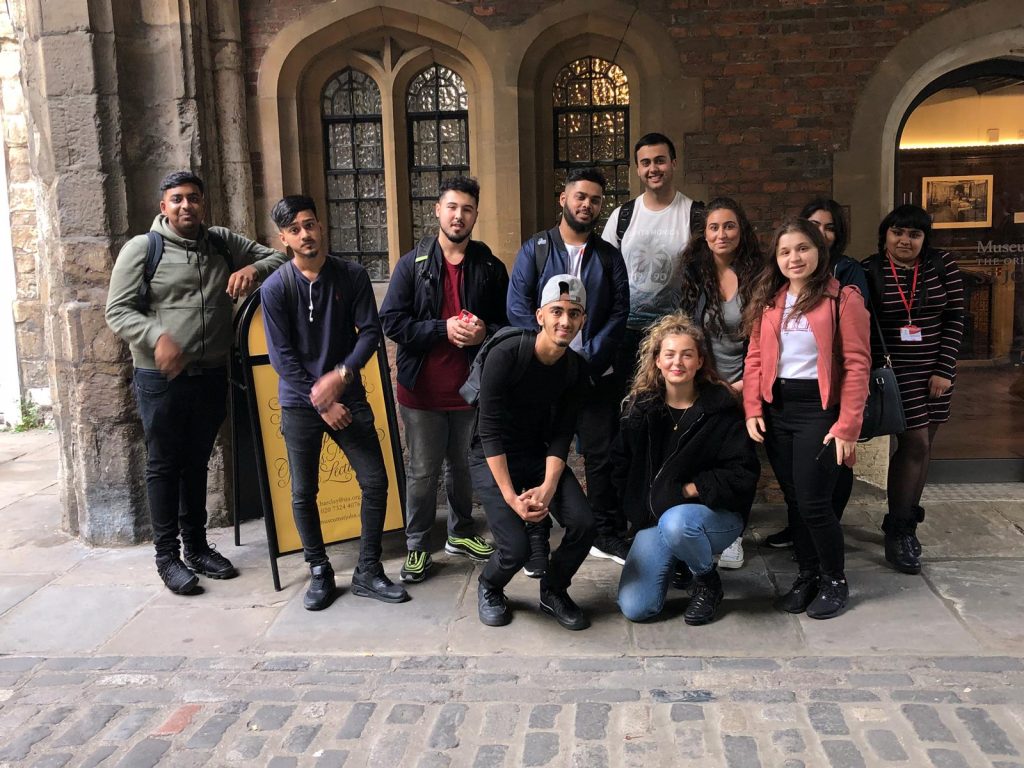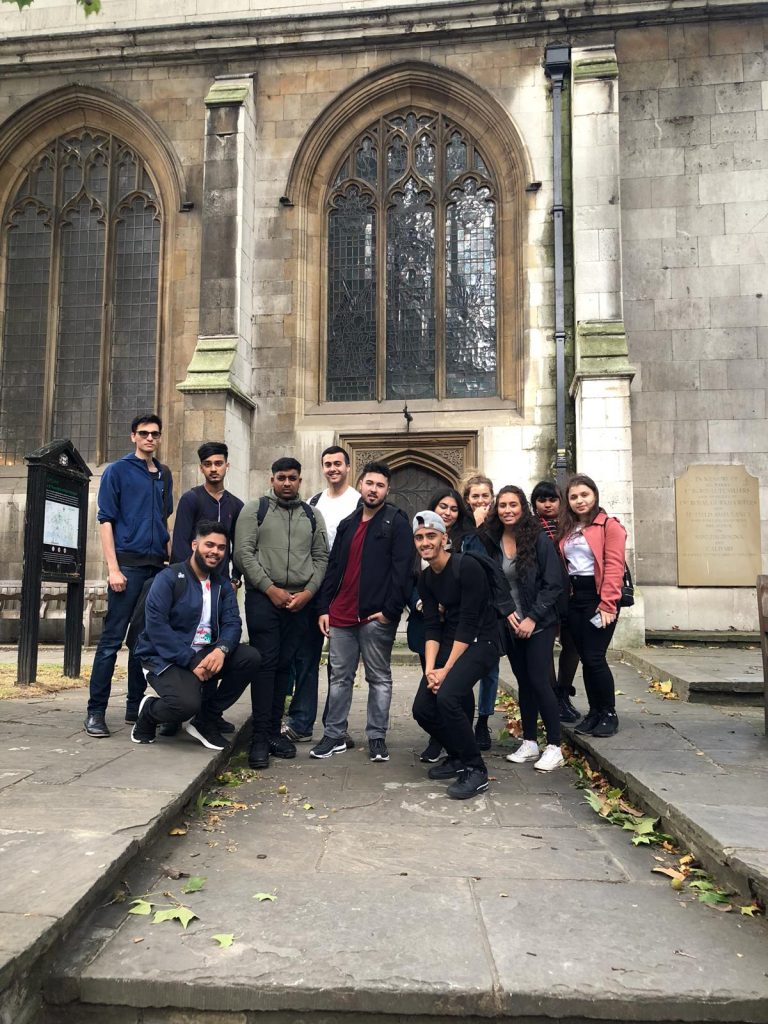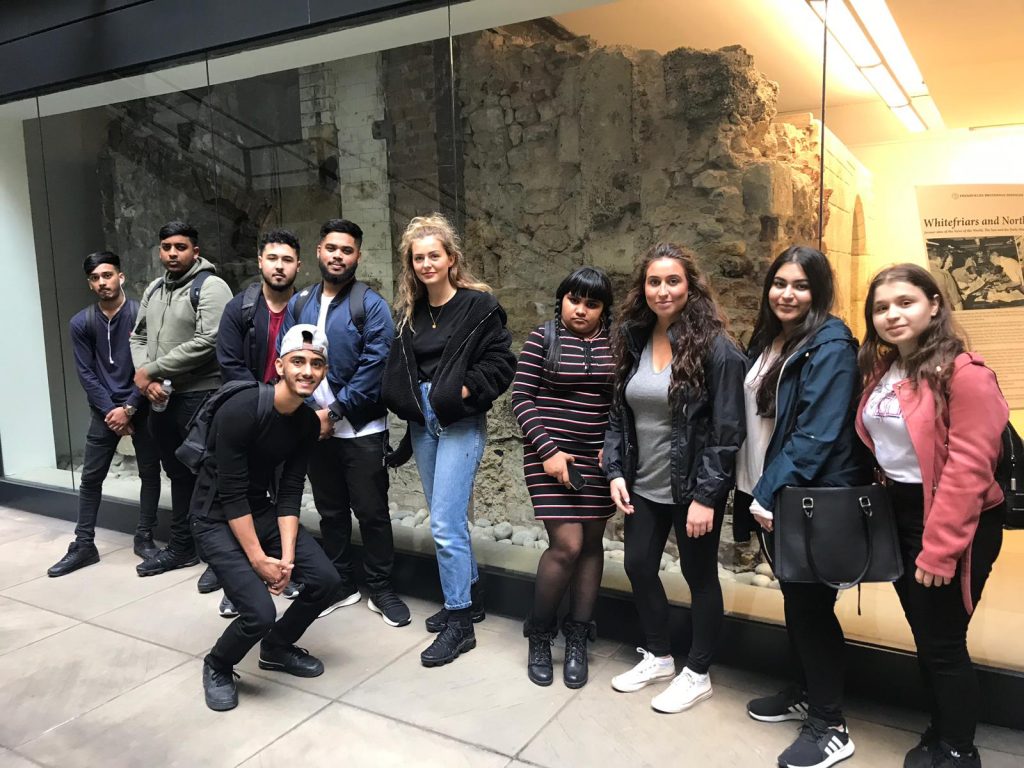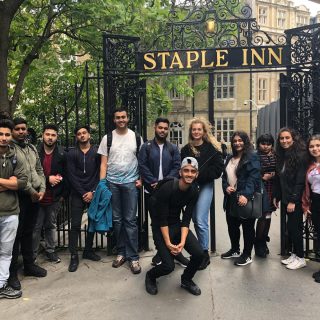In the induction period, new LLB students at the City Law School were asked to undertake the ‘Exploring the Law’ activity – wandering round the local area to find certain buildings, statues, streets or murals on one of eight trails around legal London (compiled by Emily Allbon), along with their tutor group. They then penned a short blog on some aspect of their travels. 21 students were chosen as winners and these will be posted here on Lawbore Future Lawyer. This excellent piece was chosen as one of the 21 – well done to Jennifer Saxby.
Whilst walking around London on Wednesday afternoon sounded…refreshing, a lazy afternoon in bed sounded even better, especially as it was freshers week. However, provided that I am a fresher, I decided that I did in fact need to get out of bed before 3pm and familiarise myself with the local area, as well as gain knowledge of the historical legal landmarks right at my doorstep. Our group had four building to visit that day – Magpie Alley Crypt, Staple Inn, St. Sepulchre Church and the Museum of Order of St. John. Starting with the latter (as it was the closest to us at the time) we set out on our adventure.

The Museum of the Order of St. John has been welcoming wandering visitors for over a hundred years. The vast collection inside holds paintings, manuscripts, ancient coins and much more. The most talked about and dare say, the most controversial, is the painting by a famous Italian artist, Caravaggio. Mr Thwayte, the former owner of the painting, sued Sotherby’s (a British founded art dealership) after selling the painting for £42,000, not knowing it was in fact painted by Caravaggio in 1595 – and later discovering, it was worth £10 million. Mr Twayte’s lawyers criticised the auction house for negligence and claimed they failed to carry out proper tests and consult experts. In 2015 Mr Thwayte’s dispute was lost and it was decided by The High Court that Sotherby’s consultation process with others had meant the auction house had reasonably come to the view that the quality of the painting was “not sufficiently high to indicate that it might be by Caravaggio”.
Our next stop took us to St. Sepulchre Church. At first glance it looked like the usual medieval church you would see on your day to day medieval church excursion, however, whilst digging into the history, it prevailed otherwise. Inside contains an item belonging to a gruesome background. This church preserves a handbell of which was chimed twelve times at midnight for the prisoners at Newgate Prison in the eighteenth century. Twelve chimes from the handbell at the stroke of midnight was the called the ‘death knell.’ The idea was to try and help the prisoners repent their sins before they were hung.

Thinking about how capital punishment was legal in England until 1998 makes you wonder that a mere 20 years ago human beings were being sentenced to death. This brought me back to my previous studies regarding law and morality.
Whilst the idea of ‘an eye for an eye’ could justify the death sentence 20 years ago, could the wrongful executions negate the validity for this? There have been hundreds of cases where defendants have actually been victims – for example, this was the case for Timothy Evens who was wrongfully tried and executed in 1950, then pardoned 16 years later in 1966. I wonder if all those years ago when the twelve chimes rung at midnight, was the prisoner that was sentenced to death actually guilty or innocent for their crimes.
The third destination took us to Staple Inn. The name ‘Staple’ derives from 1585, where the Inn was once a wool staple where the wool was weighed and taxed. The 5 bay Staple Inn was built in 1585 and was established as an ‘Inn of Chancery’ which was a medieval school providing training in legal practices.
More recently, the Staple Inn Chambers was founded in 1991 by a group of eight experienced practitioners and has developed over the years to house many legal practitioners. Barristers within the chambers are multi disciplinary as they specialise in one or more areas of the law; from civil litigation, crime, family, immigration and much more. The Inn has been restored many times, from surviving the Great Fire of London in 1666 to the attack of German air raids in 1944 making this building a remarkable ‘staple’ in legal London.
Once again we turned to Google Maps and started walking to our final destination, Magpie Alley Crypt. Sounding like something off of Harry Potter, we were eager to find out what was waiting for us.

Whilst making our way down the alley, we noticed the wall was full of illustrations celebrating the long association with the printing and newspaper industries which prospered in the area for centuries, beginning with the early printing presses of the 1500s. After studying the wall, our group made our way down a steep staircase which contained a late 14th century crypt. This crypt was once home to the ‘Carmelite Order of the White Friars’ since 1253 (a possibility is that the crypt was a part of their mansion), to later being used as a coal cellar after King Henry VIII disbanded the priory in the mid 16th century. Today the crypt is held captive behind glass in the basement of a law firm, Freshfields Bruckhaus Deringer, for visitors to come and admire the historic sight.
After visiting all four landmarks and through learning about their past, it became clear that law has had a substantial effect on their history; from lawsuits to executions. It turns out that getting out of bed was worth it.

